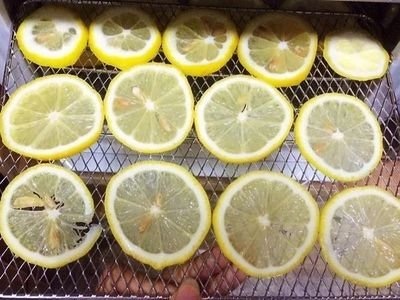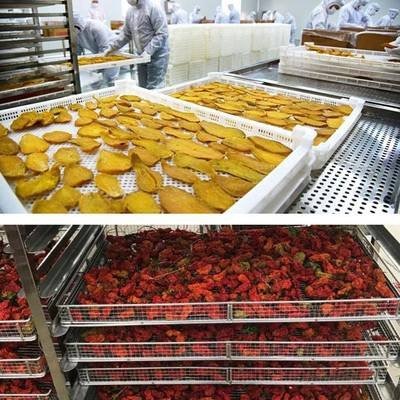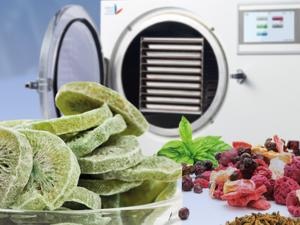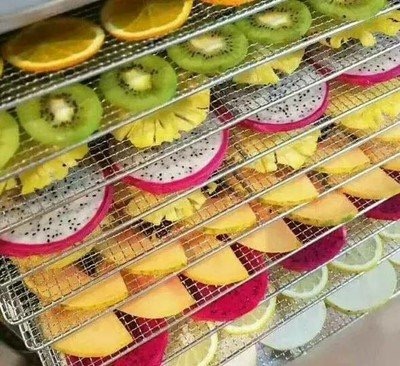
Content Menu
● Understanding Heat Pump Dryers
● Comparative Costs of Running Dryers
● Advantages of Heat Pump Dryers
● How Heat Pump Technology Works
● Implications for Food Drying Technology
>> Benefits of Heat Pump Technology in Food Dehydration
● Applications in Food Processing
● Challenges and Considerations
● Future Trends in Dryer Technology
● Conclusion
● FAQs
>> 1. What is the main difference between a heat pump dryer and a traditional dryer?
>> 2. How much can I save annually by using a heat pump dryer?
>> 3. Are there any downsides to using a heat pump dryer?
>> 4. Can heat pump technology be used for food dehydration?
>> 5. What types of foods can be dried using a dehydrator?
In today's energy-conscious world, understanding the operational costs of household appliances is crucial, especially when it comes to dryers. This article explores the differences between heat pump dryers and traditional dryers, focusing on their efficiency, running costs, and advantages. We will also delve into the implications for food drying technology, particularly for manufacturers and users looking to optimize their processes.

Understanding Heat Pump Dryers
Heat pump dryers are a modern solution that utilizes a heat exchange system to dry clothes more efficiently than traditional dryers. Unlike conventional dryers that expel hot air and moisture outside, heat pump dryers recycle the air within the drum. This method not only conserves energy but also protects garments from damage due to excessive heat.
- Energy Efficiency: Heat pump dryers typically have an energy efficiency rating of A to A+++, indicating they consume significantly less electricity than their traditional counterparts.
- Cost of Operation: On average, a heat pump dryer uses about 2.16 kWh per load. In contrast, a traditional condenser dryer can consume up to 5.2 kWh for the same load. This difference translates into substantial savings over time.
Comparative Costs of Running Dryers
To illustrate the cost-effectiveness of heat pump dryers, consider the following comparisons:
| Dryer Type | Energy Consumption (kWh/load) | Cost Per Load (£) | Annual Cost (based on 2 loads/week) |
| Heat Pump Dryer | 2.16 | 0.60 | 62.40 |
| Traditional Condenser Dryer | 5.2 | 1.46 | 151.68 |
As shown in the table above, using a heat pump dryer can save approximately £89.28 annually compared to a traditional dryer when used twice a week.
Advantages of Heat Pump Dryers
- Lower Operating Costs: As demonstrated, heat pump dryers are significantly cheaper to run due to their lower energy consumption.
- Gentler on Fabrics: The lower temperatures used in heat pump drying cycles help maintain the quality of clothes, reducing wear and tear.
- Environmental Impact: By consuming less energy, heat pump dryers contribute to lower carbon emissions, making them a more sustainable choice.
- Versatility: Heat pump dryers can handle a variety of fabrics and materials without risking damage, making them suitable for delicate items like silk or lace.
- Condensation Management: These dryers often come with built-in condensation tanks that collect moisture, eliminating the need for external venting and allowing installation in various locations.

How Heat Pump Technology Works
Heat pump technology operates based on the principles of thermodynamics. The process involves:
1. Evaporation: Moist air from the drum passes through an evaporator coil where it is cooled down. This causes moisture in the air to condense into water droplets.
2. Compression: The refrigerant absorbs this moisture and is then compressed by a compressor, raising its temperature significantly.
3. Condensation: The hot refrigerant gas passes through a condenser coil where it releases its heat back into the air inside the drum, warming it up again.
4. Recycling Air: The now-dry air is circulated back into the drum to continue drying clothes while the collected moisture is drained away.
This closed-loop system allows for continuous drying without losing significant amounts of heat or energy.
Implications for Food Drying Technology
Just as in clothing drying, the principles of energy efficiency apply to food drying technologies as well. Many food manufacturers are now considering heat pump technology for their food dehydrators due to its energy-saving benefits.
Benefits of Heat Pump Technology in Food Dehydration
- Energy Efficiency: Similar to clothing drying, food dehydrators that utilize heat pump technology can operate at lower temperatures while effectively removing moisture from food products.
- Quality Preservation: By maintaining optimal drying temperatures, these machines help preserve the nutritional value and flavor of foods better than traditional methods.
- Cost Savings: For commercial food processors, switching to heat pump technology can lead to significant reductions in energy costs over time.
- Reduced Risk of Over-Drying: Traditional food dehydrators often operate at high temperatures that can lead to over-drying or loss of essential nutrients. Heat pumps mitigate this risk by allowing precise temperature control.
Applications in Food Processing
Heat pump technology is being increasingly adopted in various sectors of food processing:
- Fruit and Vegetable Drying: Heat pumps allow for gentle drying processes that retain color and flavor while extending shelf life.
- Meat Dehydration: For products like jerky, maintaining low temperatures during drying helps preserve texture and taste without compromising safety.
- Herbs and Spices: Delicate herbs benefit from controlled drying conditions that prevent loss of volatile oils responsible for flavor.
Challenges and Considerations
While there are numerous benefits associated with heat pump dryers and dehydrators, there are also challenges:
- Initial Investment: The upfront cost of purchasing a heat pump dryer or dehydrator can be higher compared to traditional models. However, this cost is often recouped over time through savings on energy bills.
- Drying Time: Heat pump dryers generally take longer to dry clothes than traditional models due to their lower operating temperatures. Users must plan accordingly when using these machines.
- Maintenance Requirements: Regular cleaning and maintenance are essential for optimal performance, particularly concerning filters and condensate tanks.
Future Trends in Dryer Technology
The future of dryer technology is leaning towards even greater efficiency and sustainability:
- Smart Technology Integration: Many new models feature smart technology that allows users to monitor and control their appliances remotely via mobile apps. This can lead to optimized usage patterns and further energy savings.
- Enhanced Materials: Advances in materials science may lead to even more efficient heat exchangers and insulation techniques that improve overall performance.
- Sustainability Focus: As consumers become increasingly eco-conscious, manufacturers are likely to prioritize sustainable practices in both production processes and product design.
Conclusion
Heat pump dryers offer a compelling alternative to traditional drying methods with their superior energy efficiency and cost savings. When applied to food drying technologies, these advantages become even more pronounced, making them an excellent choice for manufacturers looking to enhance productivity while reducing operational costs.
In summary, if you are considering upgrading your drying equipment—whether for laundry or food processing—investing in heat pump technology is likely to yield long-term benefits both economically and environmentally.

FAQs
1. What is the main difference between a heat pump dryer and a traditional dryer?
Heat pump dryers recycle hot air within the drum while traditional dryers expel it outside. This makes heat pump dryers more energy-efficient and gentler on fabrics.
2. How much can I save annually by using a heat pump dryer?
You can save approximately £89.28 annually when using a heat pump dryer compared to a traditional condenser dryer if used twice a week.
3. Are there any downsides to using a heat pump dryer?
While they are more efficient, heat pump dryers typically take longer to dry clothes compared to traditional models.
4. Can heat pump technology be used for food dehydration?
Yes, heat pump technology is increasingly being adopted in food dehydrators due to its energy efficiency and ability to preserve food quality.
5. What types of foods can be dried using a dehydrator?
A wide variety of foods can be dried using a dehydrator including fruits, vegetables, herbs, and meats like jerky.












